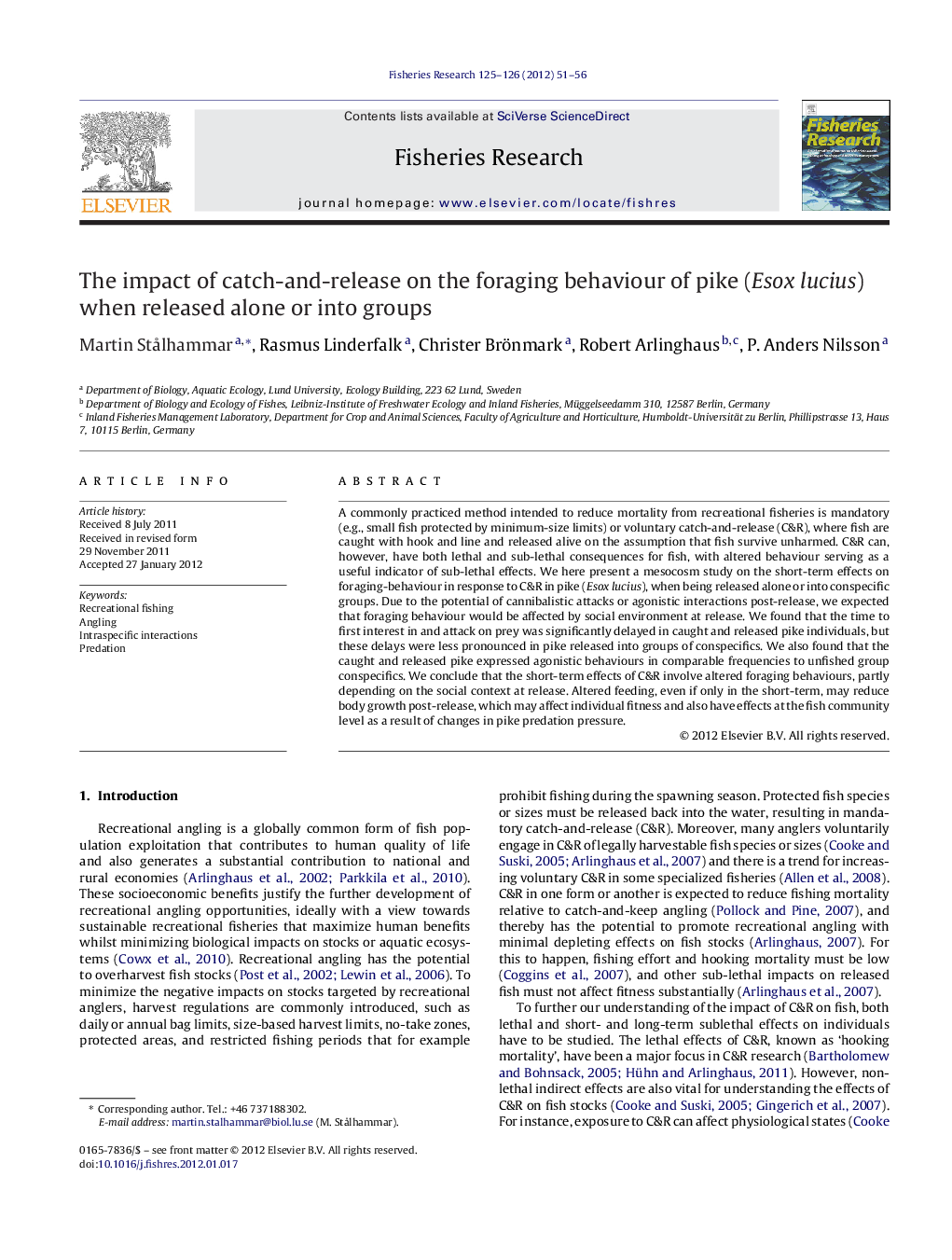| Article ID | Journal | Published Year | Pages | File Type |
|---|---|---|---|---|
| 4543411 | Fisheries Research | 2012 | 6 Pages |
A commonly practiced method intended to reduce mortality from recreational fisheries is mandatory (e.g., small fish protected by minimum-size limits) or voluntary catch-and-release (C&R), where fish are caught with hook and line and released alive on the assumption that fish survive unharmed. C&R can, however, have both lethal and sub-lethal consequences for fish, with altered behaviour serving as a useful indicator of sub-lethal effects. We here present a mesocosm study on the short-term effects on foraging-behaviour in response to C&R in pike (Esox lucius), when being released alone or into conspecific groups. Due to the potential of cannibalistic attacks or agonistic interactions post-release, we expected that foraging behaviour would be affected by social environment at release. We found that the time to first interest in and attack on prey was significantly delayed in caught and released pike individuals, but these delays were less pronounced in pike released into groups of conspecifics. We also found that the caught and released pike expressed agonistic behaviours in comparable frequencies to unfished group conspecifics. We conclude that the short-term effects of C&R involve altered foraging behaviours, partly depending on the social context at release. Altered feeding, even if only in the short-term, may reduce body growth post-release, which may affect individual fitness and also have effects at the fish community level as a result of changes in pike predation pressure.
